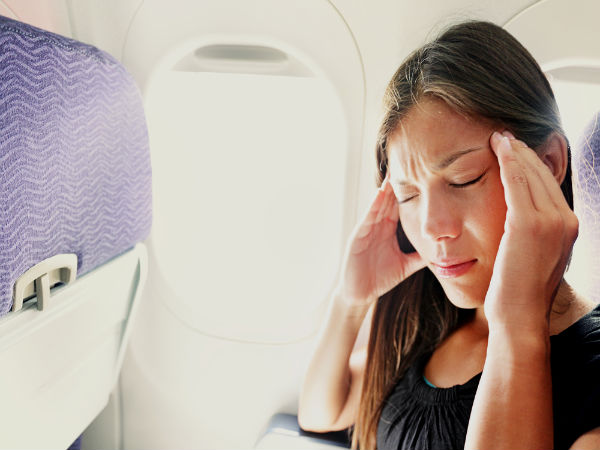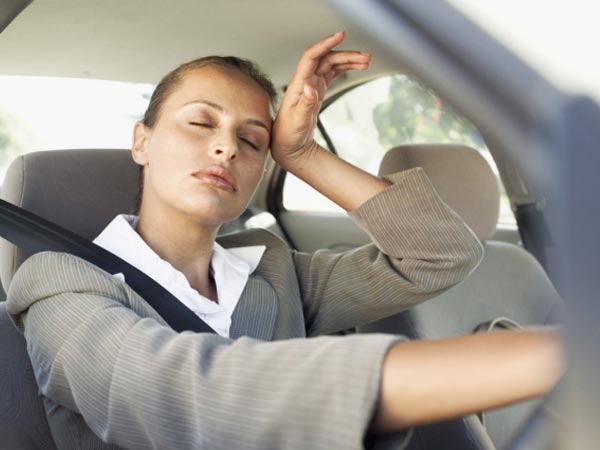Just In
- 8 hrs ago

- 9 hrs ago

- 12 hrs ago

- 14 hrs ago

Don't Miss
- Technology
 Apple Confirms Special Event for May 7: iPad Air, iPad Pro 2024 Models Expected
Apple Confirms Special Event for May 7: iPad Air, iPad Pro 2024 Models Expected - Finance
 TCS Vs Infosys Vs Wipro Shares, ADRs, Upcoming Dividends: Which Mega IT Stocks To Buy After Q4 Results?
TCS Vs Infosys Vs Wipro Shares, ADRs, Upcoming Dividends: Which Mega IT Stocks To Buy After Q4 Results? - Sports
 Who Won Yesterday's IPL Match 39? CSK vs LSG, IPL 2024 on April 23: Marcus Stoinis Fires 63-ball 124 To Quiet Chepauk
Who Won Yesterday's IPL Match 39? CSK vs LSG, IPL 2024 on April 23: Marcus Stoinis Fires 63-ball 124 To Quiet Chepauk - News
 Senator Lambie Calls For Elon Musk's Imprisonment Over Wakeley Church Stabbing Posts
Senator Lambie Calls For Elon Musk's Imprisonment Over Wakeley Church Stabbing Posts - Movies
 Mirzapur 3 OTT Release Date, Platform: When Will Mirzapur Season 3 Premiere On Amazon Prime Video?
Mirzapur 3 OTT Release Date, Platform: When Will Mirzapur Season 3 Premiere On Amazon Prime Video? - Education
 Telangana Inter Manabadi 1st and 2nd Year Results 2024 to be Declared Tomorrow
Telangana Inter Manabadi 1st and 2nd Year Results 2024 to be Declared Tomorrow - Automobiles
 Chrysler Pacifica Marks Seven Years As Most Awarded Minivan With New Campaign
Chrysler Pacifica Marks Seven Years As Most Awarded Minivan With New Campaign - Travel
Kurnool's Hidden Gems: A Guide To Exploring India's Lesser-Known Treasures
Motion Sickness (Travel Sickness): Symptoms, Causes, Types & Treatment
Motion sickness is the feeling that develops when the motion you sense with your inner ear is different from the motion you visualise. Most of us have experienced this distasteful sensation while travelling in an aeroplane, automobile, or amusement park ride. It develops in the event of a conflict between the vestibular, visual, and other proprioceptive systems and is the common response to motion stimuli during travel [1] .
You will feel nauseous and may vomit, as well as develop a severe headache. In comparison to adults, children between the ages of 3 and 12 are increasingly susceptible to motion sickness. Women experience motion sickness more than men and are increasingly viewed during menstrual cycles and pregnancy [2] .

The dizziness, light-headedness, or nausea caused by motion sickness is a result of your body's sensory organs' mixed signals to the brain. Your inner ear helps in controlling the sense of balance (a part of the vestibular system which contains three pairs of semicircular canals and two sacs, called the saccule and the utricle) and send information to the brain whether you are lying down or standing up [3] , [4] .
When you are moving in an aeroplane, you will know the feeling. However, your eyes will not be able to distinguish it - causing your brain to get mixed signals that can be confusing. It is the same when it comes to sailing in a ship or a boat (sea sickness). This, in turn, results in the development of nausea and headache [5] .
Types Of Motion Sickness
Travel sickness is categorised into three and they are as follows [6]
1. Motion is felt but not seen
In this, the motion is felt by one's vestibular system but no motion or little motion is detected by the visual system. This is termed as terrestrial motion sickness. Carsickness, airsickness, seasickness, centrifuge motion sickness, virtual reality disorientation, and dizziness due to spinning all fall under this category.
2. Motion is seen but not felt
In this case, the motion is sensed by the visual system, so the motion is seen, but no motion or little motion is sensed by the vestibular system. It is referred to as visually induced motion sickness. Space motion sickness, disorientation from films, video games, and other screen images, and virtual reality disorientation fall under this category.
3. Motion that is seen and felt, but visual and bodily perceptions are different
In this, the sense of motion in the vestibular system does not match with the motion that is seen. This happens in an environment where gravity is simulated [7] .
Symptoms Of Motion Sickness
The severe signs of the condition are as follows [8]
- nausea
- vomiting
- pallor
- pale skin
- sweating
- drooling
- loss of appetite
- short breath
- dizziness
- drowsiness
Mild symptoms of the condition are as follows [9]
- headache
- mild unease
- yawning
Some of the other common symptoms include sweating, malaise and a general feeling of discomfort [10] .

Causes Of Motion Sickness
Travel sickness develops when there is a conflict between one's senses. When the central nervous system receives conflicting messages from the sensory systems, that is, the inner ear, eyes, skin pressure receptors, and the muscle and joint sensory receptors - one gets motion sickness [11] . The brain will not be able to understand all the mixed signals, thereby causing the symptoms such as nausea and dizziness [12] .
Diagnosis Of Motion Sickness
As the condition does not have any complications, it usually resolves quickly without the need for professional diagnosis. It can be easily diagnosed by observing the signs and symptoms that occur when you are moving or travelling [13] .
Treatment For Motion Sickness
Various medications are available for treating the signs and symptoms. The medicines can be taken prior to travel so that it will help in preventing motion sickness [14] .
Medications
- Promethazine: It has to be taken 2 hours before travelling and the effect lasts for 6-8 hours. It may cause drowsiness and dry mouth [15] .
- Scopolamine: It is the most commonly prescribed medication for motion sickness. You need to consume this one before the symptoms come to the surface. You can get it in the form of a patch, and place it behind the ear 6-8 hours before travel.
- Cyclizine: It is most effective when taken at least 30 minutes before travel and is not recommended for children younger than 6.
- Meclizine: It is most effective when taken 1 hour before travel and is not recommended for children under 12.
- Dimenhydrinate chewing gum: This allows the absorption of the medication through the cheek [16] .
- Dimenhydrinate: It has to be taken every 4-8 hours.
Tips To Ease Motion Sickness
Most people are not really affected by the symptoms of the condition when they tend to get used to the situation or the movements. You can adopt the following steps to ease the discomfort caused by the symptoms [17] .
- Focus on a stable object. For example, if you are in a car, look through the windshield.
- Relax and focus on things like taking deep breaths or counting backwards from 100.
- Close your eyes for sometime.
- Chew on peppermint or chewing gums.

Prevention Of Motion Sickness
- Do not smoke [18] .
- Avoid reading.
- Do not consume alcohol [19] .
- Avoid dairy products, foods high in salt, protein, or calories, unpleasant odours, and large meals.
- Do not watch or talk to another traveller who is having motion sickness, as it can cause you to develop the same.
- Try not to sit in a seat facing backwards [20] .
- Get plenty of rest the night before travelling.
- [1] Reason, J. T., & Brand, J. J. (1975).Motion sickness. Academic press.
- [2] Money, K. E. (1970). Motion sickness.Physiological reviews,50(1), 1-39.
- [3] Reason, J. T. (1978). Motion sickness adaptation: a neural mismatch model.Journal of the Royal Society of Medicine,71(11), 819-829.
- [4] Graybiel, A., Wood, C. D., Miller, E. F., & Cramer, D. B. (1968).Diagnostic criteria for grading the severity of acute motion sickness(No. NAMI-1030). NAVAL AEROSPACE MEDICAL INST PENSACOLA FLA.
- [5] Keshavarz, B., Riecke, B. E., Hettinger, L. J., & Campos, J. L. (2015). Vection and visually induced motion sickness: how are they related?.Frontiers in psychology,6, 472.
- [6] Bles, W., Bos, J. E., De Graaf, B., Groen, E., & Wertheim, A. H. (1998). Motion sickness: only one provocative conflict?.Brain research bulletin,47(5), 481-487.
- [7] Freedberg, D., & Gallese, V. (2007). Motion, emotion and empathy in esthetic experience.Trends in cognitive sciences,11(5), 197-203.
- [8] Stern, R. M., Koch, K. L., Stewart, W. R., & Lindblad, I. M. (1987). Spectral analysis of tachygastria recorded during motion sickness.Gastroenterology,92(1), 92-97.
- [9] Li, R., Peterson, N., Walter, H. J., Rath, R., Curry, C., & Stoffregen, T. A. (2018). Real-time visual feedback about postural activity increases postural instability and visually induced motion sickness.Gait & posture,65, 251-255.
- [10] Golding, J. F., & Gresty, M. A. (2015). Pathophysiology and treatment of motion sickness.Current opinion in neurology,28(1), 83-88.
- [11] Murdin, L., Chamberlain, F., Cheema, S., Arshad, Q., Gresty, M. A., Golding, J. F., & Bronstein, A. (2015). Motion sickness in migraine and vestibular disorders.J Neurol Neurosurg Psychiatry,86(5), 585-587.
- [12] Koch, A., Cascorbi, I., Westhofen, M., Dafotakis, M., Klapa, S., & Kuhtz-Buschbeck, J. P. (2018). The Neurophysiology and Treatment of Motion Sickness.Deutsches Ärzteblatt International,115(41), 687.
- [13] Koca, C. F., & Bayinir, T. (2017). Review of pathophysiology, epidemiology, diagnosis and treatment methods in motion sickness; a special issue.Journal of Turgut Ozal Medical Center,24(3).
- [14] Golding, J. F., & Gresty, M. A. (2015). Pathophysiology and treatment of motion sickness.Current opinion in neurology,28(1), 83-88.
- [15] Hwang, E., Kuhn, S. M., & Lange, B. (2019). Motion Sickness. InTravel Medicine(pp. 423-428). Elsevier.
- [16] Zhang, L. L., Wang, J. Q., Qi, R. R., Pan, L. L., Li, M., & Cai, Y. L. (2016). Motion sickness: current knowledge and recent advance.CNS neuroscience & therapeutics,22(1), 15-24.
- [17] Berger, L., & Wolf, K. (2018, November). WIM: Fast Locomotion in Virtual Reality with Spatial Orientation Gain & without Motion Sickness. InProceedings of the 17th International Conference on Mobile and Ubiquitous Multimedia(pp. 19-24). ACM.
- [18] Golding, J. F., Paillard, A. C., Normand, H., Besnard, S., & Denise, P. (2017). Prevalence, predictors, and prevention of motion sickness in Zero-G parabolic flights.Aerospace medicine and human performance,88(1), 3-9.
- [19] Muth, E., Keshavarz, B., Smart Jr, L. J., So, R., & Beadle, S. (2018, September). Discussion Panel: Motion Sickness in Virtual Environments. InProceedings of the Human Factors and Ergonomics Society Annual Meeting(Vol. 62, No. 1, pp. 2043-2046). Sage CA: Los Angeles, CA: SAGE Publications.
- [20] Zhang, L. L., Liu, H. Q., Yu, X. H., Zhang, Y., Tian, J. S., Song, X. R., ... & Liu, A. J. (2016). The combination of scopolamine and psychostimulants for the prevention of severe motion sickness.CNS neuroscience & therapeutics,22(8), 715-722.
-
 disorders cureAltitude Sickness: Types, Causes, Symptoms, Risk Factors, Diagnosis, Treatment And Prevention
disorders cureAltitude Sickness: Types, Causes, Symptoms, Risk Factors, Diagnosis, Treatment And Prevention -
 wellness9 Natural Remedies To Ease The Symptoms Of Motion Sickness
wellness9 Natural Remedies To Ease The Symptoms Of Motion Sickness -
 wellness6 Must Avoid Foods When Travelling
wellness6 Must Avoid Foods When Travelling -
 pregnancy parentingWhite Lung Syndrome: What Are The Symptoms Of The Disease Rampant In China? How Does It Spread?
pregnancy parentingWhite Lung Syndrome: What Are The Symptoms Of The Disease Rampant In China? How Does It Spread? -
 healthWorld HIV/AIDS Day: What Is The Difference Between HIV and AIDS?
healthWorld HIV/AIDS Day: What Is The Difference Between HIV and AIDS? -
 healthDengue 101: Causes, Symptoms, Risks, Complications, Treatment, Prevention, Diet And More
healthDengue 101: Causes, Symptoms, Risks, Complications, Treatment, Prevention, Diet And More -
 healthDiarrhoea 101: Causes, Symptoms, Risks, Complications, Treatment, Prevention, Diet And More
healthDiarrhoea 101: Causes, Symptoms, Risks, Complications, Treatment, Prevention, Diet And More -
 health'Epileptic Nightmare' of Neurocysticercosis: The Hidden Epidemic of Parasites Causing Epilepsy
health'Epileptic Nightmare' of Neurocysticercosis: The Hidden Epidemic of Parasites Causing Epilepsy -
 pregnancy parentingLife-Threatening Risk During Pregnancy: Sepsis Can Harm Both Mother and Baby
pregnancy parentingLife-Threatening Risk During Pregnancy: Sepsis Can Harm Both Mother and Baby -
 healthStay Informed: The Hidden Dangers of Legionnaires' Disease and How to Prevent It
healthStay Informed: The Hidden Dangers of Legionnaires' Disease and How to Prevent It -
 healthMyths vs Facts: Can A Single Mosquito Bite Really Give You Dengue?
healthMyths vs Facts: Can A Single Mosquito Bite Really Give You Dengue? -
 healthTop 5 Reasons For Vaginal Rash: When You Should See A Doctor
healthTop 5 Reasons For Vaginal Rash: When You Should See A Doctor


 Click it and Unblock the Notifications
Click it and Unblock the Notifications



